Welcome to the ultimate pickleball terminology guide! Whether you're a beginner learning the rules or a seasoned pro perfecting your strategy, understanding pickleball terms is essential. From basic court lines to advanced shot names and slang, this guide covers every pickleball term you need to know. We include clear definitions, context, and official references to help players in the U.S. (and beyond) navigate terms like “kitchen,” “dink,” and “foot fault.” By the end, you’ll speak pickleball like a champion.
Pickleball has its own language, borrowing from tennis, ping-pong, and more. For example, an ace is “a serve that is not returned by the opponent” , similar to tennis. Key terms like rally, fault, and non-volley zone (NVZ)come up in every game. Official resources like the USA Pickleball rulebook define these terms (2025 edition) . This overview explains why learning pickleball lingo is important. Clear communication (calling “yours” or “let”, etc.) and understanding on-court calls improve your play.
Court etiquette uses specific calls. For example, saying “nice shot!” or “good game” are common displays of sportsmanship. During play, partners often call out “Mine!” or “Switch!” to quickly decide who will take the shot. These phrases might not be in the rulebook, but new players should learn them to avoid confusion and maintain a friendly atmosphere.
Pickleball terminology can seem like a foreign language at first. Learning terms helps beginners follow coaching tips, watch tutorials, and communicate on court. For example, if a coach says “watch your backhand volley,” you need to understand how to execute that shot. Understanding lingo also speeds up your learning curve, as you can quickly grasp strategies described in videos and articles.
As a result, this guide is structured to cover terms from basic to advanced, making it useful for players of all skill levels. We also include slang and idioms that casual players often hear so you're not left confused during social games. Once you learn these terms, practicing with others becomes easier since everyone uses the same language. Finally, mastering this vocabulary will make you confident whether you read an article, hear a coach’s instruction, or chat with fellow players.
Pickleball’s popularity is soaring in the USA. As more Americans take up the sport, knowing the vocabulary helps players of all ages improve quickly. Use this guide to decode court terminology and level up your game.
Table of Contents: Understanding Pickleball Terms
-
Introduction to Pickleball Terms
-
Court Lines and Zones
-
Basic Shots and Strokes
-
Advanced Shots and Strategies
-
Scoring and Rules Terminology
-
Player Positions and Formations
-
Equipment and Gear Terms
-
Slang and Common Expressions
-
Terms for Beginners, Intermediate, and Advanced Players
-
Related Resources and Further Reading
-
Frequently Asked Questions
Court Lines and Zones
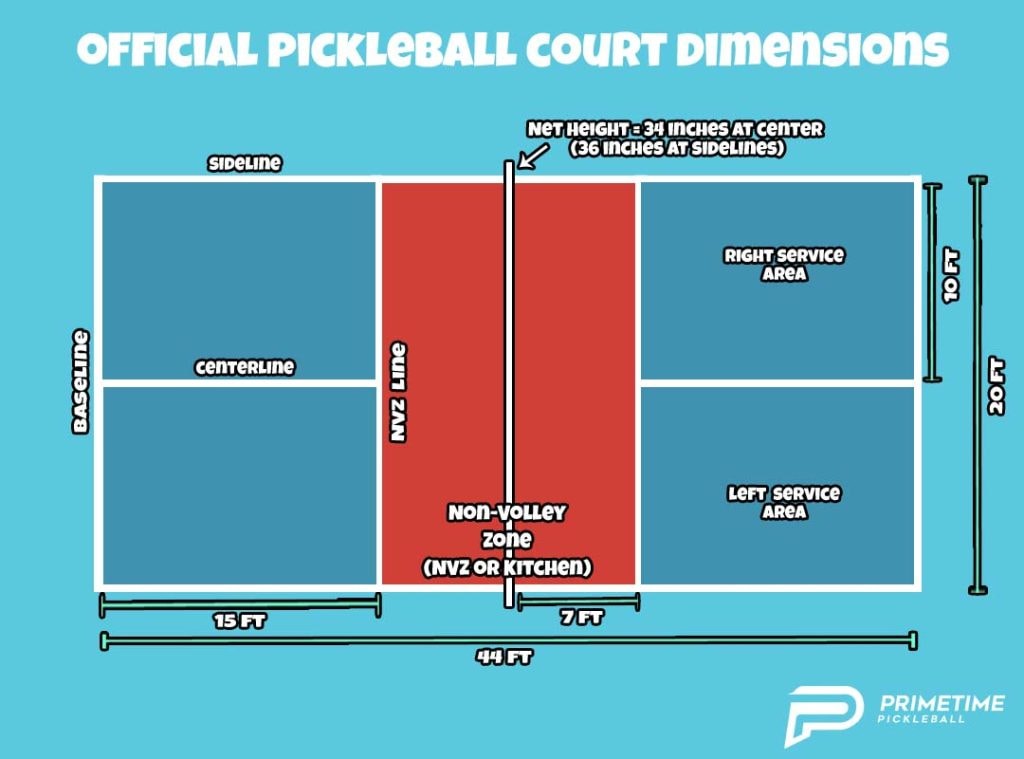
Understanding the court layout is the foundation of pickleball vocabulary. A standard pickleball court is 20 feet wide and 44 feet long, with several key lines that define play areas.
1.4 Kitchen (Non-Volley Zone)
The kitchen, also known as the non-volley zone, is a 7-foot area on both sides of the net. The non-volley line marks the boundary of the non-volley zone, and players cannot volley the ball while standing inside this area.
1.5 Service Court
The service court is divided into left and right sections by the center line. For a serve to be valid, it must land in the court diagonally opposite the server, beyond the non-volley zone.
Baseline
The baseline is the back boundary line of the court, located 22 feet from the net on each side. Players must stand behind this line when serving. Hitting the ball beyond (past) the baseline is out of bounds.
Sideline
The sidelines are the outer boundary lines along each side of the court. They mark the in-bounds area. If the ball lands outside these lines on a serve or during a rally, it is considered out, and results in a fault.
Centerline
The centerline runs perpendicular to the net, dividing the court in half. It splits each side into left and right service courts. Servers must aim diagonally across this line so the serve lands in the opposite side’s service box.
Kitchen (Non-Volley Zone)
The kitchen, officially called the non-volley zone (NVZ), is the 7-foot area on each side of the net. Players cannot volley the ball (hit it in the air) while standing in the kitchen. If a player steps on or inside this line while volleying, it’s a fault. The nickname “kitchen” comes from a friendly origin story (some say because you shouldn’t get “into the kitchen” to cook), but USA Pickleball uses the term NVZ.
Service Court
Each side of the court is divided into two service courts by the centerline and kitchen line. A valid serve must land in the diagonally opposite service court, past the kitchen line and before the baseline. The service courts ensure alternate serves to the left and right sides.
Backcourt
The backcourt refers to the area near the baseline (the deep part of the court). Shots hit deep toward the baseline are called backcourt shots. Players often retreat to the backcourt for powerful drives or to defend against deep shots.
Midcourt
The midcourt is the area between the kitchen and the baseline. It is a transitional zone. Players may stand here to volley or prepare for net play.
These lines and zones define the legal play areas for serves and volleys. Always watch the sidelines, baselines, and the kitchen line to avoid faults. Proper court positioning in each zone is a key part of strategy.
Basic Shots and Strokes
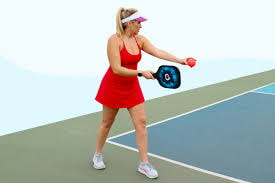
Pickleball uses both traditional racket strokes and unique shots. Each has a specific name:
Serve
The serve begins each rally. It must be hit underhand and below the server’s waist. Servers stand behind the baseline and hit the ball diagonally into the opponent’s service court. If the serve hits the net and still lands in the correct service box, it’s a let (replay). Each team gets two serve attempts (first and second serve) per point. Scoring starts when the serve is returned or a fault occurs.
[IMAGE: A pickleball player serving the ball from behind the baseline]
Return of Serve
The player who stands diagonally opposite the server is the receiver. They must return the serve (often letting it bounce first, per the two-bounce rule). A strong return sets up the rally. If the receiving team faults (for example, misses the ball or hits it out), the serving team wins the point.
Volley
A volley is a shot hit in the air without letting the ball bounce. A volley shot occurs when a pickleball player hits the ball in midair before it bounces. Volleys are usually played near the net and can be very fast. Volley hitting refers to the technique of striking the ball in the air during a rally, and it is important to execute this in such a way that control and precision are maintained. Advanced players may attempt midair pickleball shots, such as the 'flapjack', which involve hitting the ball in midair. Players can only volley when standing completely behind the kitchen line. Stepping on or into the kitchen while volleying is a foot fault. Proper volley technique (short back-swing, punch motion) is crucial in net exchanges. A short volley shot is a quick, controlled volley with a compact swing, while a punch shot is a fast, short volley with a quick backswing and follow-through. Mastering midair pickleball and understanding when a pickleball player hits a volley shot are essential for effective play.
[IMAGE: A pickleball player hitting a volley at the net]
Dink
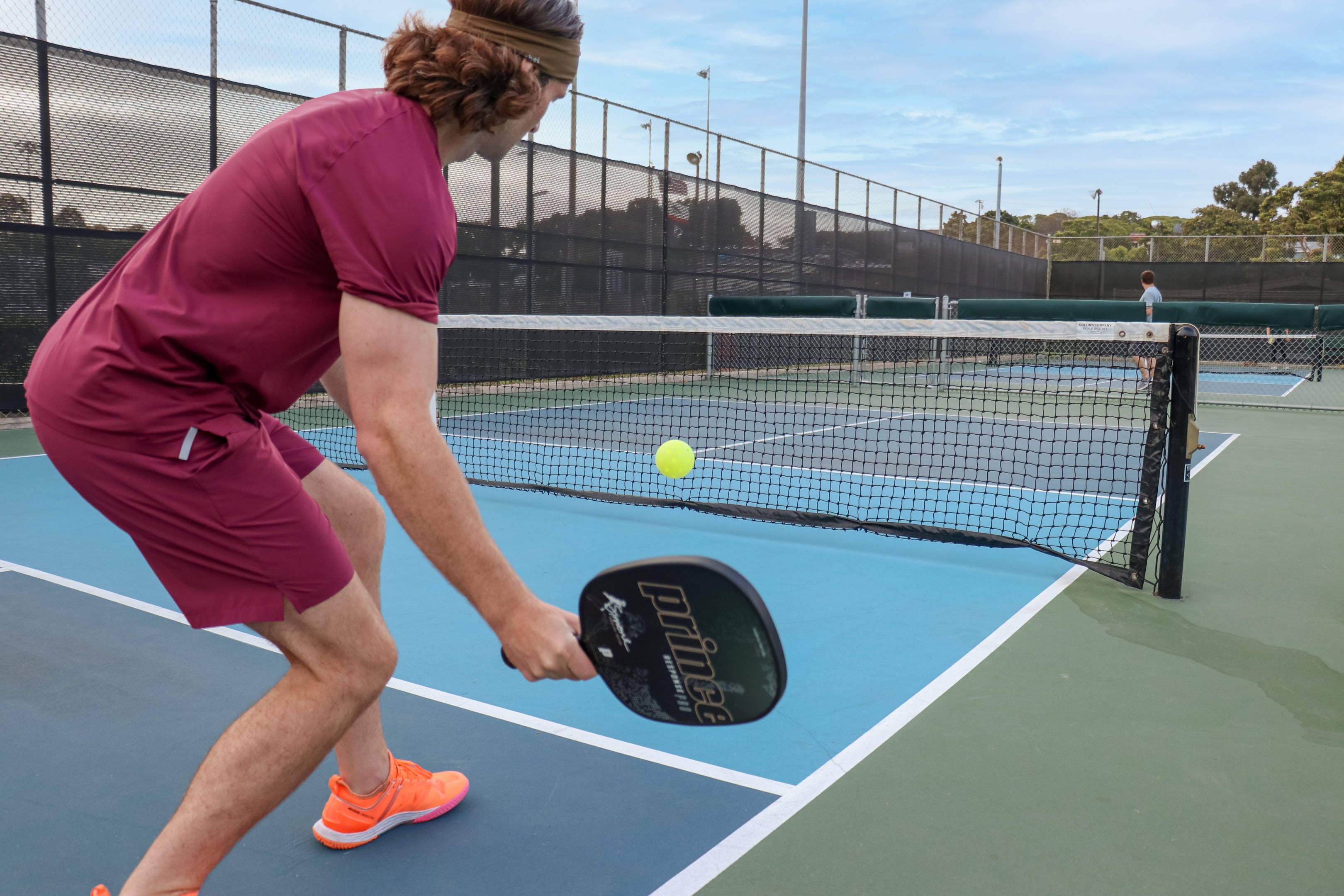
A dink is a soft, controlled shot that barely clears the net and lands in the opponent’s kitchen. Dinks force a slow-paced rally and are a hallmark of net play. USA Pickleball training tips emphasize being patient and “continu[ing] to dink until the opponent makes a mistake”usapickleball.org. Mastery of the dink is crucial. Because volleying in the kitchen is a fault, a dink must be played as a groundstroke (after one bounce).
Groundstroke
A groundstroke shot is a basic pickleball shot taken after the ball has bounced once. Both forehands and backhands are groundstroke shots. For example, a baseline groundstroke is a normal rally shot hit off a bounce. A forehand shot is a fundamental offensive shot in pickleball, often used to apply pressure and control the direction of play. Groundstrokes can be used as a defensive shot to reset the rally or as an offensive shot to pressure the opponent. Proper paddle contacts and the way the ball hits or ball strikes the paddle are important for executing different groundstrokes effectively. Groundstrokes can be driven deep or played softly as approach shots. Another type of pickleball shot is the carry, where the ball does not bounce off the paddle but is carried along during the forward motion. This is generally considered a fault in pickleball.
Forehand
A forehand is a groundstroke where the player’s palm faces the net on contact. It’s usually the stronger, more natural swing for most players.
Backhand
A backhand is a groundstroke hit with the back of the hand facing the net. It’s often used to hit balls on the player’s non-paddle side. Both forehand and backhand groundstrokes can be driven with topspin or played softly.
Topspin
A shot with topspin is hit low-to-high, causing the ball to spin forward in flight. Topspin makes the ball dip quickly after bouncing, pushing it forward. Players use topspin in drives and smashes to make returns bounce low and fast.
Backspin (Slice/Chop)
A backspin (also called a slice or chop) is hit high-to-low, creating reverse spin. The ball floats more and bounces softly, even slightly backward. Chop shots are used to slow rallies or drop the ball low (like a soft underside drop shot).
Lob
A lob is a high, arching shot aimed deep into the opponent’s court. It’s used to push opponents back or buy time when defense is under pressure. A passing shot, on the other hand, is aimed to prevent the opposing player from returning the ball by directing it away from them, often to the sidelines or just out of their reach.
Smash (Overhead Slam)
A smash (or overhead slam) is a powerful overhand shot executed with an upward motion, hit from above the head at a downward angle. Like an aggressive serve, it’s used to finish points by driving the ball hard into the opponent’s court.
Drop Shot
A drop shot is a soft, downward shot that barely clears the net and lands near the opponent’s kitchen. It’s typically used when your opponent is deep at the baseline. A well-placed drop shot forces them to run forward, often out of position.
Double Bounce (Two-Bounce) Rule
After the serve, the double bounce rule requires each side to let the ball bounce once before volleys are allowed. This means the ball bounces on the return of serve, and then on the next shot before players can volley. After those two bounces, the ball can be hit out of the air.
Fault
A fault is any rule violation that ends the rally. When a fault occurs, the ball is declared a dead ball and play stops. Before a fault is committed, the ball is considered a live ball and play continues until a fault or rule violation is called. Examples include hitting the ball out of bounds, volleying in the kitchen, or serving from the wrong spot. If a fault is committed by the serving team, they lose the point or the serve; if by the receiving team, the serving team scores a point.
Foot Fault
A specific fault during serving: the server’s feet must stay behind the baseline until after contacting the ball. Stepping on or over the line early is a foot fault. Additionally, if a player steps into the kitchen line while volleying, that’s also a foot fault.
Let
A let is a serve that hits the net but lands in the proper service court. In that case, the serve is retaken (replayed) without penalty. No points are awarded on let serves.
Side Out
A side out occurs when the serving team loses the rally (often by fault) and service passes to the opponent. No point is scored on a side out if traditional scoring is used.
Half-Volley
A half-volley is hit when the paddle contacts the ball immediately after the bounce, so the paddle meets it near the ground. It requires quick reflexes. The half-volley is often executed as the ball rises after bouncing, making timing crucial. A half-volley is effectively a groundstroke played almost like a volley.
Reset (Resetting)
To reset is a strategy term: hitting a soft shot (usually to the kitchen) to slow down a fast rally. For example, if opponents are aggressively volleying at the net, you might hit a gentle reset shot into their kitchen to regain control.
Advanced Shots and Strategies
These terms describe specialized shots and tactics used by more experienced players:
Third Shot Drop
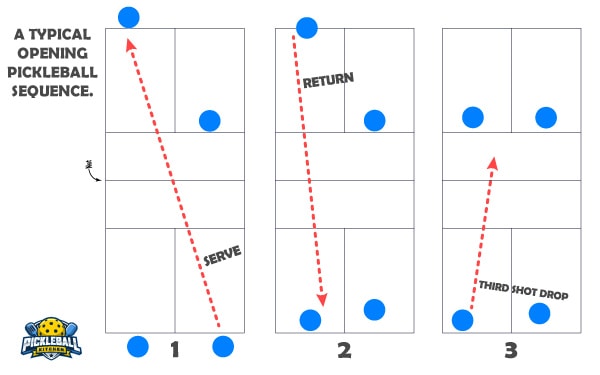
After a team’s serve and the opponent’s return, the third shot drop is the next shot. It’s an underhand shot from deep in the court that softly lands in the opponent’s kitchen. This allows the serving team to move up to the net while forcing opponents to hit up. A well-executed third shot drop is a key skill in advanced play.
Approach Shot
An approach shot is any shot hit while a player is moving forward toward the net. Usually it is a groundstroke taken aggressively to approach the kitchen and take control of the net.
Champion Shot
A champion shot is a rally-winning shot that has bounced twice in the NVZ (kitchen) without the opponent touching it. It’s often used humorously to describe a shot so good it basically ends the point.
Drop Shot Volley
A drop shot volley is a tactical volley where a player at the net lightly taps the ball so it falls close to the net. It’s used when opponents are deep at the baseline, to catch them off guard.
Flick Shot
A flick shot is a quick, downward volley with little backswing, used when a ball is barely reachable at net. It is very fast and surprising, often catching opponents off guard.
Poach
Poaching means crossing into your partner’s side of the court to hit a ball that would normally be theirs. It’s an offensive doubles tactic to intercept and finish a point early. Poaching is often used to gain an advantageous position on the court. Poaching requires good communication and timing.
Stacking
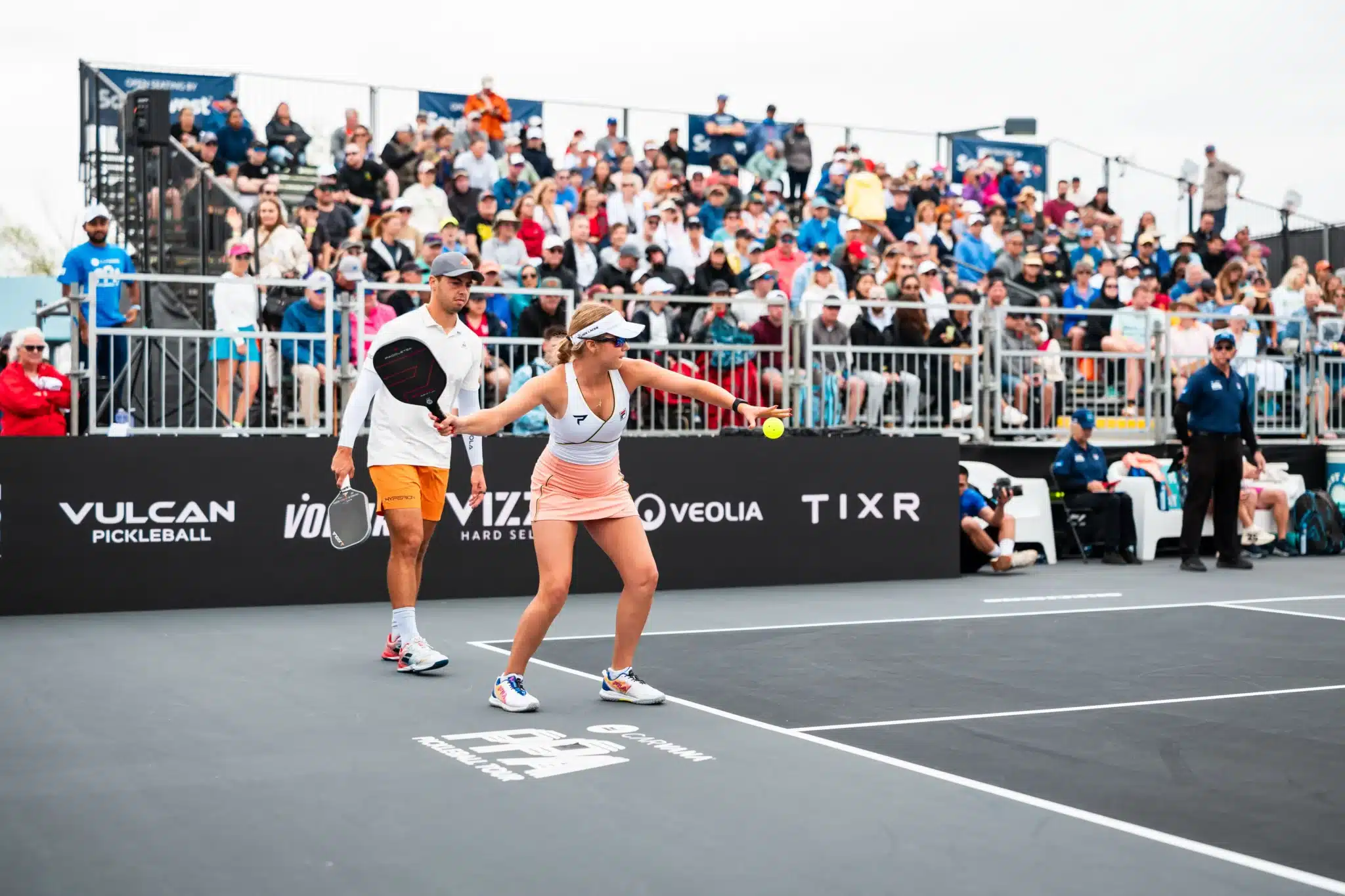
Stacking is a doubles formation strategy. Normally partners stand diagonal from each other. In stacking, both players start on the same side before the serve, then reposition (or “stack”) immediately after the serve to get into their preferred side. This helps keep each player on their stronger side of the court.
Shadowing
Shadowing means mirroring your partner’s movements on the court. Both players move in sync to cover the court together, often maintaining roughly the same distance apart. Shadowing can improve court coverage and partnership cohesion.
Split Step
A split step is a preparatory move: a slight jump with the feet just as the opponent hits the ball. This readies you to move quickly in any direction. Proper split-step timing is a key footwork element in pickleball.
Ready Position
The ready position is how you stand prepared to play the ball: knees bent, weight forward, paddle up and in front. Your feet and shoulders should face the net. A good ready position is essential for quick movement and reaction.
OPA! (Open Volley)
Players often shout “OPA!” (Greek for “Oops!”) after the third shot. It signals that the two-bounce rule is done and volleying is now allowed. It’s an informal way to say “nets are open!”
Erne
An Erne is an advanced volley play. If you are at the net near a sideline, you can jump outside the court boundary (next to the net post) and volley the ball close to the net. By stepping off the court, you avoid the kitchen when making the volley. It’s named after player Erne Perry.
Rally
A rally is an example of rally continuous play, where the series of shots goes back and forth after a serve and the action continues until a fault or point is scored (by a point or fault) propickleballer.com. During rallies, continuous play is maintained as players exchange shots without interruption until play is stopped. Long rallies often feature a lot of dinking and soft shots.
Scoring and Rules Terminology
Pickleball scoring and rules bring additional terms:
Scoring Sequence
In doubles, servers announce the team's score before each serve as “(server’s team score) – (opponent’s score) – (server number)”. For example, “5–3–2” means the serving team has 5, opponents have 3, and the second server is about to serve. Call the team's score clearly before every serve.
Game
A pickleball game is usually played to 11 points (win by 2), though the format of a pickleball game played in tournaments can vary, with games sometimes going to 15 or 21 points.
Match
A match typically consists of best 2 out of 3 games.
Serve vs. Rally Scoring
Pickleball traditionally uses side-out scoring: only the serving side can score points. If the serving team wins a rally, it scores a point; if they lose, the serve changes (side out) and no points are awarded. Some casual play and tournaments use rally scoring, where either side can score points on any rally.
Fault (Scoring)
See Fault above. If the serving team faults, no point is awarded and the serve passes. If the receiving team faults, the serving team scores a point.
Let
As explained, a let on serve is replayed. There is no let on volleys in pickleball (unlike some other sports).
Side-Out
Already defined above: change of serve without scoring when serving team loses.
Pickled
“You got pickled” means you lost a game without scoring a point (e.g., 11–0). It’s slang, not an official term.
Transition Zone
Informal term for the area between the kitchen and baseline. Many mid-court shots happen here.
Replay (Let)
A replay is the same as a let: a point replay with no score change. Besides serve lets, replays can be called if players can’t agree on a call.
Player Positions and Formations
-
Server: The player hitting the serve. In doubles pickleball, each team has two servers (Server 1 and Server 2) per side-out, competing against the opposing team.
-
Receiver: The player diagonally opposite the server.
-
Doubles: Doubles pickleball features two players per team (four total). Partners occupy diagonally opposite court halves and work together to outplay the opposing team.
-
Singles: One player per side. There is only one server per side before a side-out.
-
Left/Right Court: The side (left or right) from the perspective of each player. On an even score, serve from the right; on odd, from the left.
-
Formations:
-
Traditional: Partners start on different sides and stay there for the point, each covering their own side against the opposing team.
-
Stacking: Both players start on the same side before the serve and then move to their desired positions after (see Stacking above). Players may switch to the opposing side of the court during play to optimize positioning.
-
Communication: Partners often call “mine” or “yours” to decide who takes a shot. Good doubles teams plan poaches and hand signals for serves to coordinate against the opposing side.
By contrast, in singles format, players serve from the right side at 0 and alternate sides after each point. The same serve and fault rules apply.
Equipment and Gear Terms
-
Pickleball Paddle (Racquet): The solid racquet used to hit the ball. A pickleball paddle has no strings (unlike tennis racquets) pickleballportal.com and features a flat paddle face or head. Pickleball paddles come in various sizes and materials, with regulation standards set by USA Pickleball.
-
Paddle Face / Head: The flat hitting surface of the pickleball paddle.
-
Edge: The rim around the paddle face. Some paddles have edge guards to protect from chipping.
-
Grip/Handle: The part you hold. Grip size (circumference) and grip material affect feel. A smaller grip allows wrist motion for spin; a larger one gives stability.
-
Core: The inner material (often polymer or Nomex) of the paddle. A thicker core can absorb shock; a thinner core can add power.
-
Pickleball Ball: A hollow plastic ball with holes. The pickleball ball is essential for gameplay, and its design affects spin, bounce, and playability. Indoor balls (fewer holes) are lighter; outdoor balls (more holes) are heavier. USA Pickleball approves specific brands of balls for official play.
-
Paddle Contacts: Paddle contacts refer to the moments when the pickleball paddle makes contact with the pickleball ball during play. Proper paddle contact is important for executing different shots and avoiding faults.
-
Court Shoes: Supportive athletic shoes (non-marking soles) designed for quick lateral movement. Proper shoes prevent slips and improve comfort.
Looking for a storage solution for your pickleball shoes? Check out the FORWRD Court Caddy Shoe Cube, designed specifically for court shoes and travel convenience.
-
Net and Posts: Portable nets are set to 34 inches high at center (36 inches at posts). They must meet standard width and tension.
-
Approved Equipment: USA Pickleball publishes an official list of approved paddles and balls. Using unapproved gear in a sanctioned match is not allowed.
Slang and Common Expressions
-
Pickle: The origin of the name is debated (some say from a dog named Pickles). Players often say “in a pickle” (slang from English) to mean a tricky situation.
-
Pickled: Slang for losing a game 0–11. (“He got pickled.”)
-
Breadstick: Slang for losing 1–11 (the “1” looks like a breadstick).
-
Hawk / Ray: Shouts indicating the sun is in one team’s eyes. A player might yell “Hawk!” to point out the glare.
-
Yours / Mine: Classic calls in doubles to avoid confusion. Partners use these to claim a shot.
-
Flubjack: A midair shot that should have bounced first (an illegal double hit). If a player inadvertently volleys a ball that should have bounced, others call “Flubjack!” (like a fault).
-
Volley Llama: Slang for an illegal volley shot made while standing in the non-volley zone (kitchen). Hitting a volley from this area is a fault.
-
Body Bag: Slang for hitting an opponent directly with the ball, usually in the chest, often playfully or as an aggressive shot.
-
Ace: A winning serve (opponent fails to return) pickleballportal.com.
-
Winner: Any shot the opponent cannot touch before it bounces twice.
-
Put-Away: A decisive shot, often a smash or drive, intended to end the rally.
-
Kill: Usually a hard overhead smash or put-away winner.
-
Reset: Verb used in chat when a team wants a soft shot (to the kitchen) to slow play.
Terms by Skill Level
Different players focus on different terms:
-
Beginners: Focus on core terms: serve, return, volley, dink, kitchen (NVZ), fault, score. For example, beginners should know that a volley means hitting the ball in the air, and that hitting it in the kitchen before a bounce is a fault. Learning the two-bounce rule and how to call the score correctly is key.
-
Intermediate: Start using tactics and more jargon: third shot drop, stacking, poaching, reset, transition zone, momentum. For instance, by now you should handle a dink rally and perform a third-shot drop. You might use terms like “reset” or “shadowing” during games.
-
Advanced/Professional: Use subtle and comprehensive vocabulary. This includes around-the-post (ATP) shots, Erne, open/closed paddle face, continental grip, put-away vs shot placement, balancing spin, and especially the specific rules (technical timeout, replay situations). Pro players and coaches also discuss strategies with terms like “sun angle,” “swing path,” and “reading the ball.” They know official lingo (NVZ, let, re-serve) and cutting-edge slang. Advanced players often compete in major league pickleball events and pickleball tournaments organized by the Professional Pickleball Association. The Dynamic Universal Pickleball Rating (DUPR) is used to rate players globally, providing a universal skill assessment. Pickleball tournaments are a key part of the competitive landscape for advanced players.
A player’s language grows with experience. Keep adding new words to your glossary as you improve.
Related Resources and Further Reading
For more on related topics, check out these internal links:
-
What is Pickleball? – A beginner’s overview of rules and gameplay.
-
How to Play Pickleball – Step-by-step guide to rules and techniques.
-
Pickleball Equipment Guide – Tips for choosing paddles, balls, and gear.
-
Pickleball Scoring Guide – Detailed explanation of scoring methods.
-
Best Pickleball Paddles of 2025 – Our unbiased paddle reviews (note: brand-neutral summaries, not promotions).
-
Top Pickleball Gifts for Him and Her in 2024 – The ultimate guide for gifts and accessories
Recommended external sources:
-
USA Pickleball (Official) – Official rules, approved equipment, and association.
-
International Pickleball Federation – Global rules and events.
-
Pickleball Portal Glossary – Extensive community glossary and tips.
-
The Dink (DinkPickleball) – News site with articles on pickleball culture and terminology.
-
Forwrd Pickleball News – Updates, guides, and gear reviews for pickleball players.
Frequently Asked Questions
What does “kitchen” mean in pickleball?
The kitchen is the non-volley zone (NVZ) – the 7-foot area on each side of the net. You cannot volley (hit the ball in the air) while any part of your body is in the kitchen. Hitting the ball there before a bounce is a fault.
What is a dink in pickleball?
A dink is a soft shot that just clears the net and lands in the opponent’s kitchen. It’s used to keep the ball low and force opponents to hit up. Dinks must be played off a bounce since volleying in the kitchen is illegal.
How do you keep score in pickleball?
Only the serving team can score (traditional side-out scoring). In doubles, the server announces the score as “(your score)–(opponent’s score)–(server number).” Games go to 11 points (win by 2). E.g., “2–4–1” means you have 2, opponents 4, and you are the first server.
What is a fault in pickleball?
A fault is any rule violation that stops play. Common faults: hitting out of bounds, volleying from the kitchen, or foot faults on serve. A fault by the serving side causes a side-out or point loss.
What does “pickled” mean?
“Pickled” means you lost a game without scoring a point (for example, an 11–0 loss). It’s slang among players. (Winning without your opponents scoring is sometimes called a “blanket” or “shutout.”)
Where can I find the official pickleball rulebook?
The USA Pickleball website offers the official rulebook (2025 edition) usapickleball.org. It includes all definitions and rules. They also publish an Equipment Standards manual for approved gear.
Can you volley in the kitchen?
No. You may only volley from completely behind the kitchen line. Stepping on or inside the kitchen while volleying is a foot fault. You can enter the kitchen to play a bounced ball, but not to volley.
What is the two-bounce rule?
After the serve, the receiving side must let the ball bounce, and then the serving side must let it bounce once. Only after these two bounces can either side volley. This is the two-bounce rule (also called the double-bounce rule).
How high is the net?
The net is 34 inches high at the center and 36 inches at the posts (official regulation height).
What is stacking in doubles?
Stacking is a doubles strategy where both players start on the same side before the serve, then quickly move (stack) to their desired positions after the serve. This keeps each player on their preferred side during play.
What is a third shot drive?
A third shot drive is an aggressive shot on the third stroke of the rally. Instead of a soft drop, it is hit deep and fast into the opponent’s backcourt. It can catch opponents off guard if they expect a drop shot.
What does “OPA” mean?
“OPA!” is an exclamation shouted after the third shot. It signals that the NVZ restriction is over and volleys are legal. It’s a friendly way to indicate that net play is now open.
What if players hit out of position?
In doubles, each team’s players should follow the serving order. If partners accidentally switch sides or server order, a side out can be called by opponents. In friendly games, teams often forgive this, but in tournaments, correct sequence is enforced.
Can you call a timeout?
Yes. Each team has two 60-second timeouts per game. To call one, simply say “Time!” before the serve. Timeouts stop play and allow rest or coaching.
What if I misannounce the score?
If a server clearly calls the wrong score, the point may be replayed (let) or corrected by agreement. Officials at tournaments typically replay the point to ensure accuracy.
This FAQ section covers common questions in a concise, voice-search-friendly way. For any remaining questions or newly coined terms, revisit this glossary, consult the official rulebook, or visit our Help Center. As pickleball evolves, new terms may appear, but understanding these basics will keep you fluent on and off the court. Remember, the more you hear and use these words, the more they’ll become second nature.
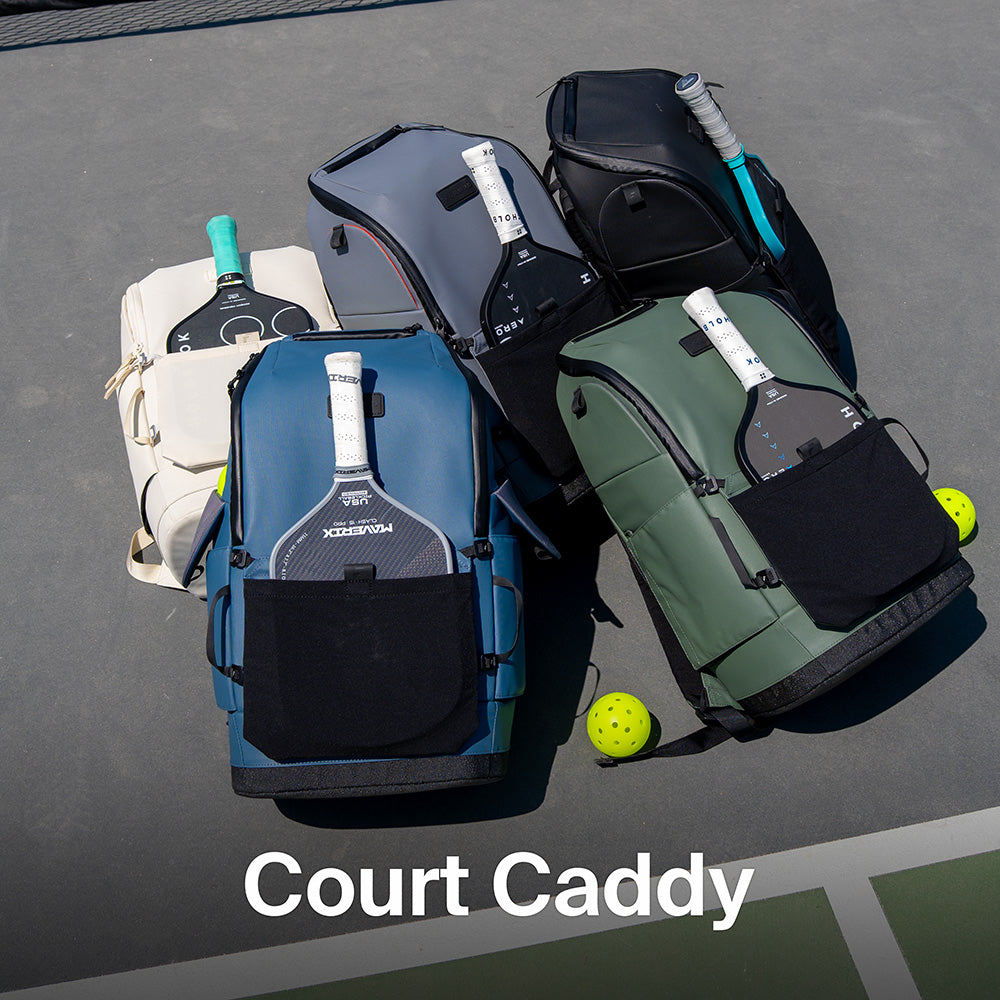
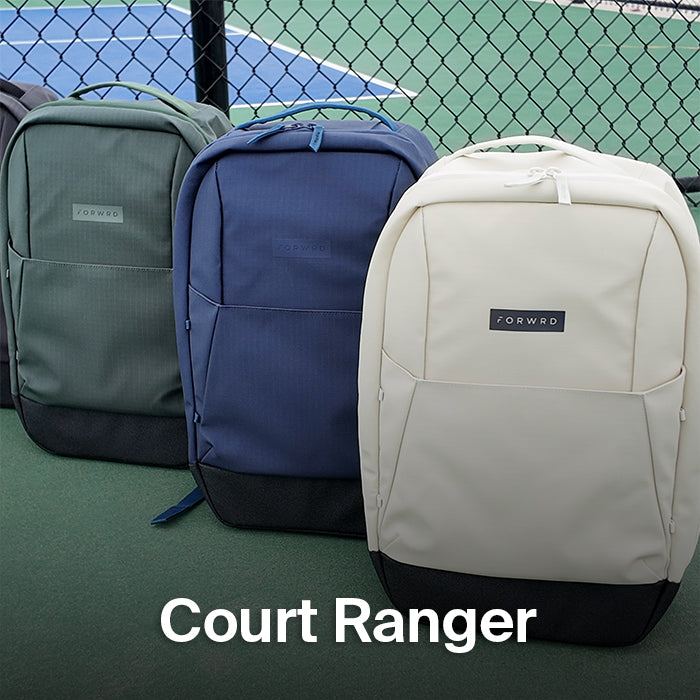

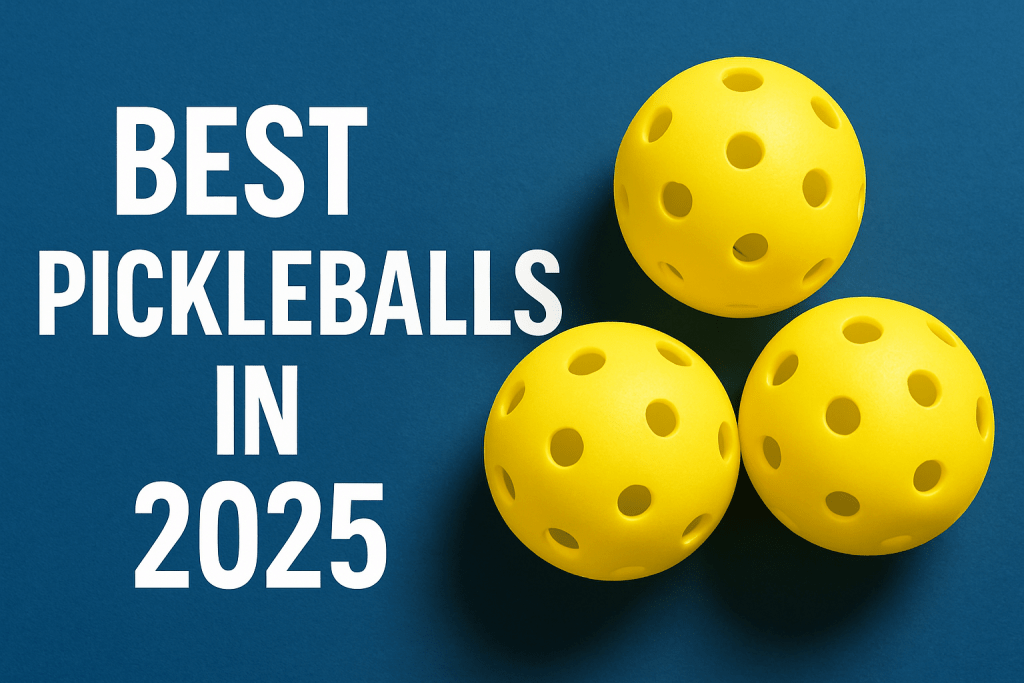
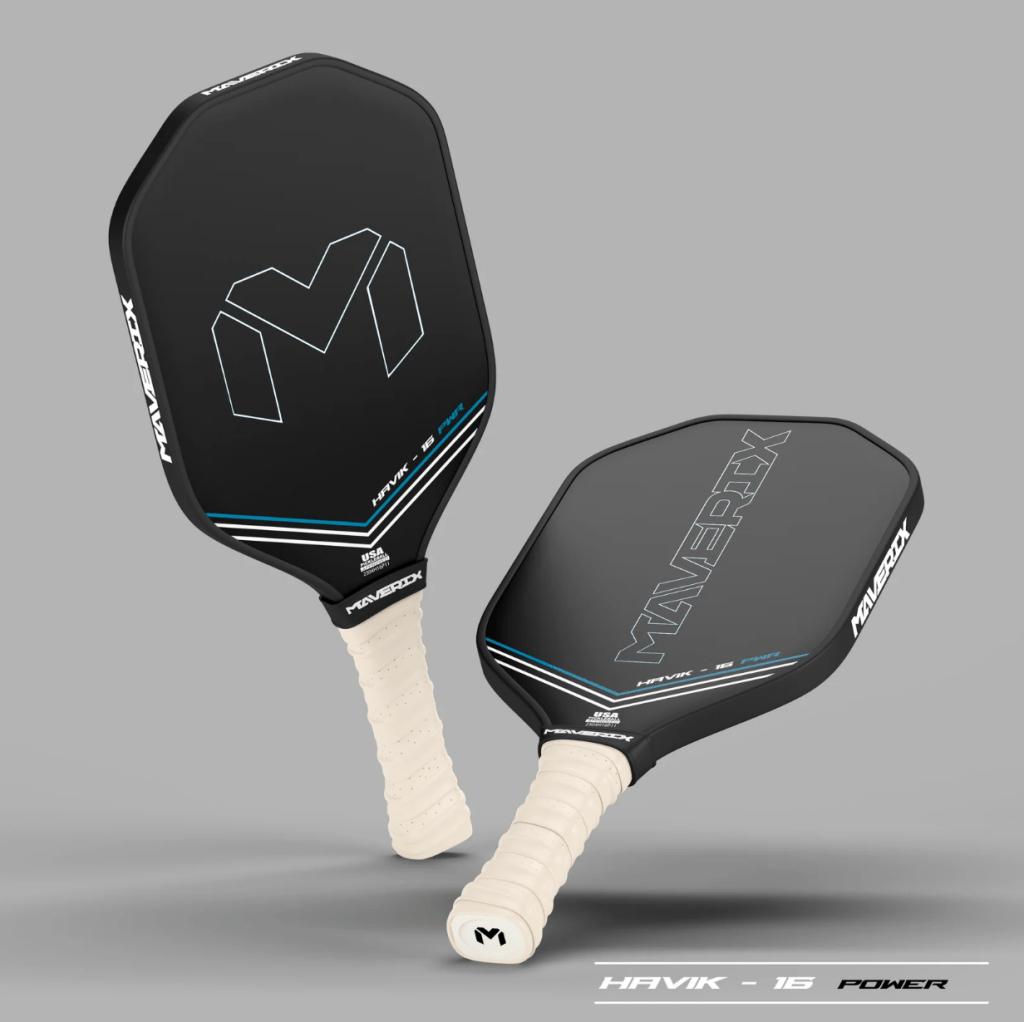
Leave a comment
All comments are moderated before being published.
This site is protected by hCaptcha and the hCaptcha Privacy Policy and Terms of Service apply.